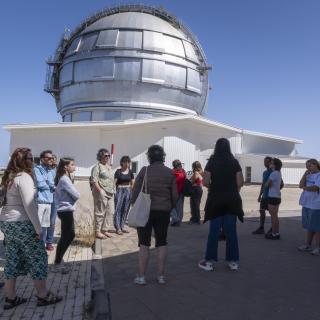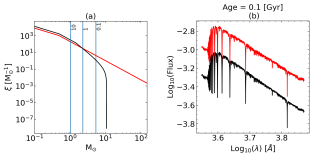Professor at the Institute of Theoretical Astrophysics at the University of Oslo (Norway) and director of the center of excellence "Rosseland Center for Solar Physics", Mats Carlsson uses computer simulations to manage giant amounts of data in order to shed light about his field of study: stellar atmospheres codes. In the XXIX Canary Islands Winter School of Astrophysics, organized by the Instituto de Astrofísica de Canarias (IAC) this year, Carlsson will explain how to obtain information about the light that escapes from steller atmospheres and other issues related to radiative transfer.
“The study of stellar atmospheres and stellar atmosphere codes are essential for our knowledge of stars”
1. During this year's Winter School, you will talk about stellar atmosphere codes. What should society know about this field?
“Stellar atmosphere codes” deals with understanding stellar atmospheres through computer simulations. This is extremely important because the “stellar atmosphere” is defined as the region of a star from which light escapes. Most of what we know about stars comes from analyzing the radiation they emit – in contrast with Astrophysics we cannot perform experiments so we just have to extract a maximum of information from the light the star emits. The study of stellar atmospheres, and stellar atmosphere codes, is thus essential for our knowledge of stars.
2. At the Institute of Theoretical Astrophysics at the University of Oslo, how many people work on this field and what is the volume of work?
We are about 20 people working in the solar physics group at the Institute of Theoretical Astrophysics of the University of Oslo – from November 1st organized in the centre of excellence “Rosseland Centre for Solar Physics”
3. In order to create the codes and software that analyze this information, you have to understand the physics behind this process. What physical phenomena are happening inside the stars? Do we understand they well or do we think we understand they well?
We understand most of the physical processes rather well but the problem is that it is not possible to include all our detailed knowledge about the physics in stellar atmosphere codes – the computers of today are not powerful enough to enable the inclusion of all the physics. We have to be smart and do the right simplifications in order to be able to complete a simulation in a reasonable amount of time. Much of the research is thus about what simplifications we can do.
4. Do we continue to have unknowns about these physical phenomena? In the case of having they, which are the most important?
The physics is rather well known but what phenomena play the important role in e.g. the heating of the outermost layers of the Sun and stars is still unknown. Also the acceleration of the solar wind and the processes behind stellar activity cycles are not so known.
5. Looking to the future, what information can the Thirty Metre Telescope (TMT) or the Extremely Large Telescope (E-ELT) provide us with in this field?
TMT and E-ELT can provide large statistical samples of stellar observations going back to the very early universe. In addition, I would like to stress the importance of solar physics as a plasma physics laboratory enabling very detailed studies of our nearest star, the Sun. We will get new solar telescopes in the near future – the American DKIST and the European Solar Telescope (EST) – both 4m class telescopes.



